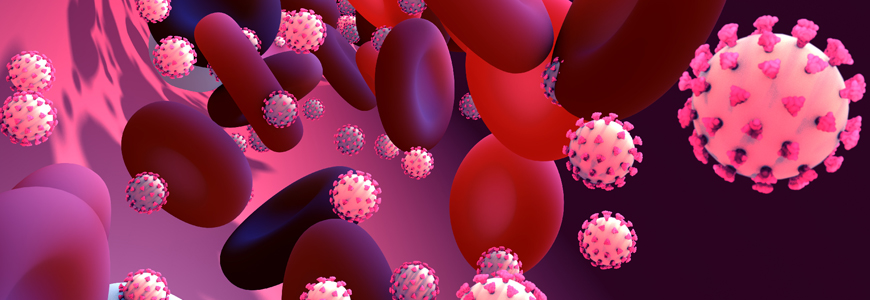A statewide research initiative launched by the Duke Division of Pulmonology, Allergy and Critical Care Medicine will analyze the biological history of COVID-19, its impact in North Carolina and beyond, and explore potential treatment options.
In addition to the pulmonology team, the multidisciplinary project includes representatives from Duke Health Pathology, Duke Health Clinical Laboratories, and the Human Vaccine Institute. Other specialties will help analyze biospecimens. More than 15 Duke Health laboratories are involved in tissue analysis.
The effort is the first broadly based, coronavirus-focused research project in the state, says Patty Lee, MD, chief of the Division of Pulmonology, Allergy and Critical Care Medicine. The project will accelerate scientists’ understanding of the effects of coronavirus and may lead to new therapies, she says.
Projecting a 12-to-18-month timeline to gather data, Lee has reached out to the NIH, Department of Defense, the Veterans Health Administration and philanthropic foundations to seek contributions to finance an initiative that could require up to a $15 million in contributions. The U.S. Department of Defense has awarded $8 million grant to Lee to launch a clinical trial to combat COVID-19-related health worker burnout at Duke Health. Several medical organizations, including the N.C. Medical Board, have cited the combinations of COVID-19 and health worker burnout as “twin-demics,” Lee says.
To create tissue collection and sharing protocols for the analysis, Lee and co-investigator Carolyn Glass, MD, PhD, director of the Duke Autopsy Service and chief of cardiovascular pathology, have worked with Michael B. Datto, MD, PhD, pathologist and medical director of Duke Health Clinical Laboratories. The Duke Biorepository and Precision Pathology Center, led by Shannon J. McCall, MD, has also been critical in the acquisition of non-COVID-19 lung specimens, which will serve as valuable control cases.
“We will use these samples to learn more about the disease and its preference for certain areas such as blood vessels and airways,” Lee says. “We don’t yet have an adequate understanding of the ways in which COVID demonstrates such different effects in multiple organs as well as the varying regions of the state and nation.”
Searching for genetic structure of virus
Researchers have collected biospecimens from patients with COVID-19 from the following Duke sources:
- Patients treated in ICUs
- Patients discharged following hospital treatment
- Autopsies from individuals whose death was attributable to COVID-19
- Patients who consented to sampling (more than 1,500)
Types of tissue samples included bronchoalveolar lavage, aspirate, whole blood, plasma, serum, stool, urine, nasopharyngeal swabs, peripheral blood monocular cells and ribonucleic acid collected over several months of follow up in our post-COVID clinics, initiated by the Pulmonary division. During investigative autopsies, specimens from each organ system are collected.
Datto says the data will help researchers understand the immune system’s response to the disease as well as information about the genetic structure of the virus. “We are working to make sure we don’t miss this extremely important opportunity,” Datto says. “Embedded with these samples we believe the cure for COVID-19 will be evident.”
Duke’s comprehensive autopsy service as well as its substantial experience in immunology based on transplant experience enhances the potential of the research, Glass says. “Regionally, and certainly in North Carolina, no team is working at this scale with the infrastructure we have to collect and distribute the tissue samples we are delivering to researchers,” Glass says. “It’s important to do this as soon as possible given the course of the disease and a potential reemergence in winter.”
Lee says identifying biological markers from patients with COVID-19 will yield important clues to potential long-term damage. “We may be able to understand the factors that determined whether these patients lived or died,” she says. “What is their long-term sequela? They may have recovered from the coronavirus, but did they experience permanent neurological damage or lung, heart or kidney consequences that may become long-term health concerns.”
The project has already involved teams of physicians, scientists and technologists collaborating on research that establishes a database for future investigation, Glass says. “This effort will contribute to finding a cure because you can’t find the cure until you identify the underlying mechanism, and you won’t know what the virus is doing until you have the blood samples and tissue.”

